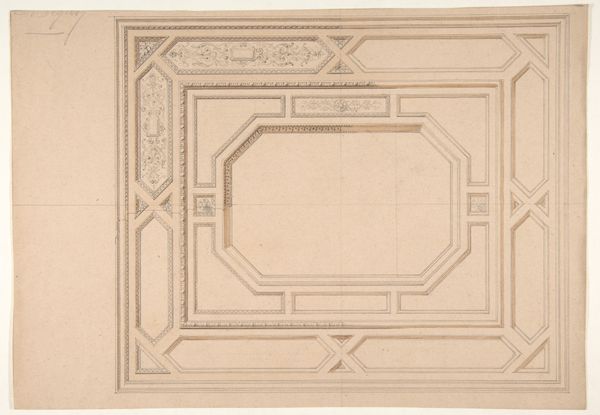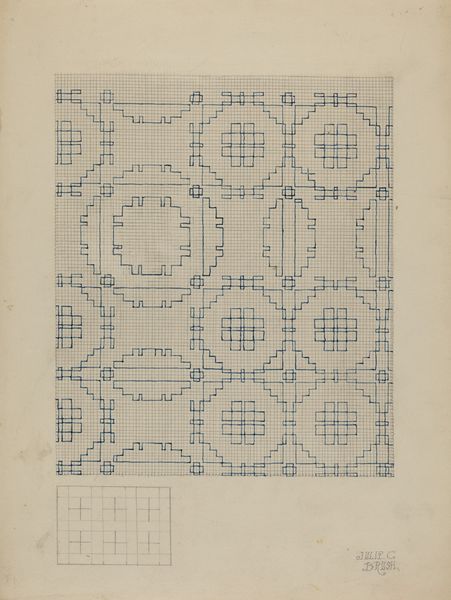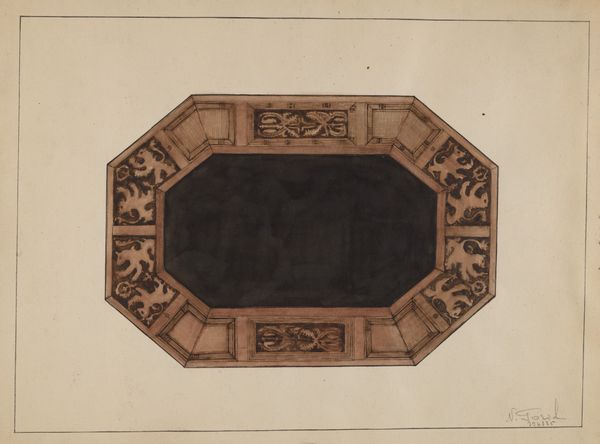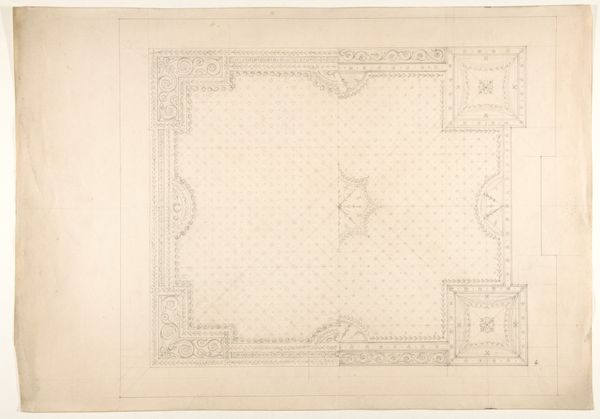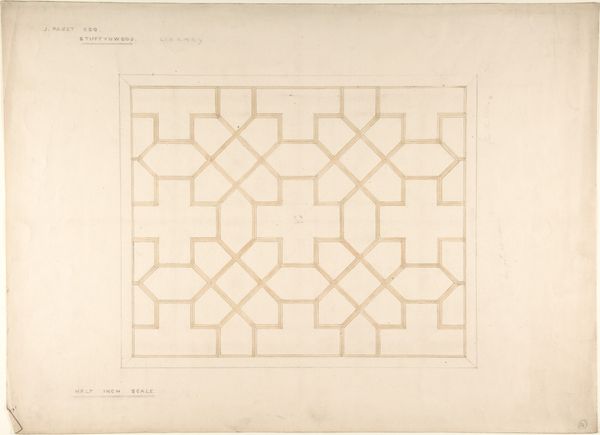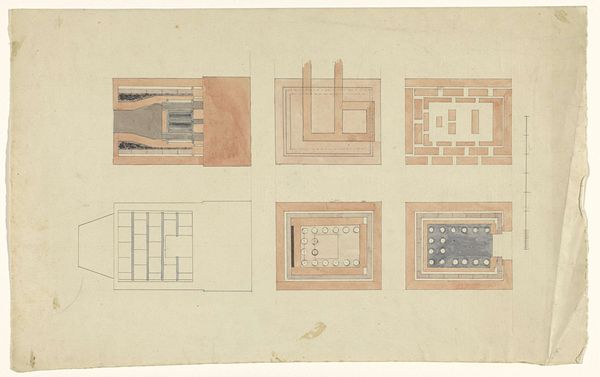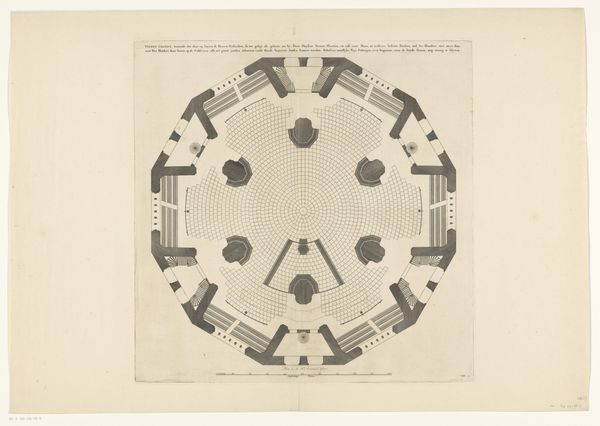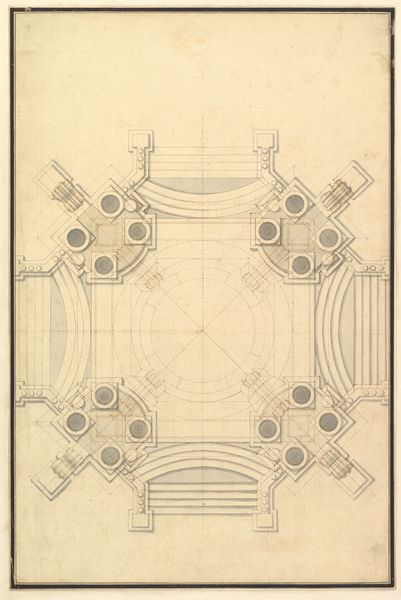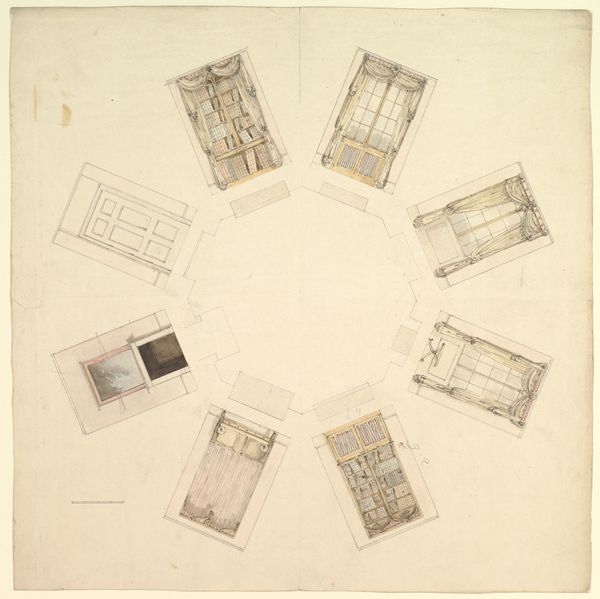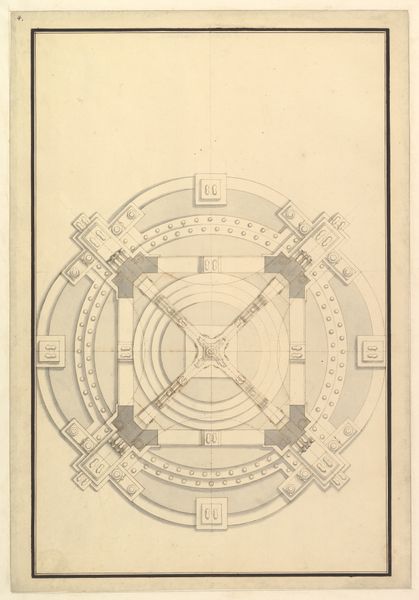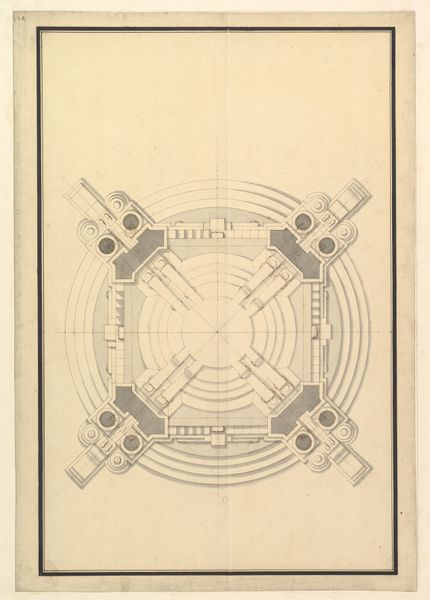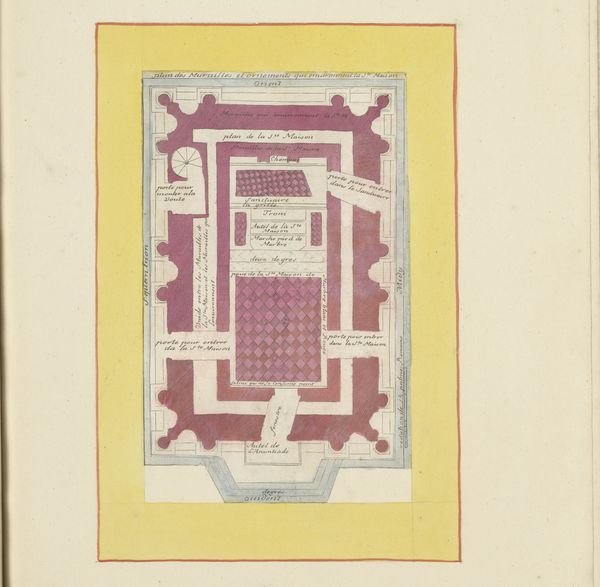
Partial design for ceiling with a border of flowers 1830 - 1897
0:00
0:00
drawing, print
#
photo of handprinted image
#
drawing
#
aged paper
#
toned paper
#
homemade paper
#
water colours
#
ink paper printed
# print
#
white palette
#
flower
#
nude colour palette
#
soft colour palette
#
watercolor
Dimensions: Overall: 8 3/8 x 8 5/16 in. (21.3 x 21.1 cm)
Copyright: Public Domain
Curator: Immediately, I notice the delicate grid pattern dominating the composition. There's an airy quality to it. Editor: We are looking at "Partial design for ceiling with a border of flowers," an interesting print crafted sometime between 1830 and 1897 by Jules-Edmond-Charles Lachaise. It's held at the Metropolitan Museum of Art. What sociopolitical context do you think this piece might speak to? Curator: I'm drawn to the precision of the lines and the contrast to the organic floral border, particularly how it exists in relation to ideas around class and societal expectations around ornamentation. Editor: Precisely, this could definitely be positioned as a form of architectural planning from a time of significant social transformation. The use of watercolor gives the print a somewhat ephemeral feel. Semiotically speaking, this makes the art accessible because it also uses toned and homemade papers which allow the piece to be less rigidly ‘professional’. Curator: What interests me, also, is how such an architectural plan has flowers: flowers are symbols and gendered objects and in that capacity allow an insight into design beyond simple space and function. The delicate rendering of these blooms around the edges, does not remove the industrial element but certainly transforms it. How much did he engage, I wonder, with the feminine expectation that form follows function. Editor: Indeed. There is a push and pull that reminds me about a dialectical discussion about what a design space entails. If one examines the floral aspects closely, one will see that they lack an aggressive stance, it seems to show more submission instead. What philosophy may be drawn on, you think, with this observation? Curator: It makes one consider the Victorian emphasis on floral symbolism and how that filtered into design. I'd be fascinated to see what impact the societal codes for respect and beauty, and associated politics had on this specific print. We must recognize this goes against much of Modern art and how we discuss spaces for design. Editor: So, ultimately, what does Lachaise ask us? To reconsider our engagement to beauty when building and designing. An excellent proposal from such old, and therefore historical, printing design. Curator: It underscores, ultimately, how art continues to negotiate evolving expectations of living and identity.
Comments
No comments
Be the first to comment and join the conversation on the ultimate creative platform.
